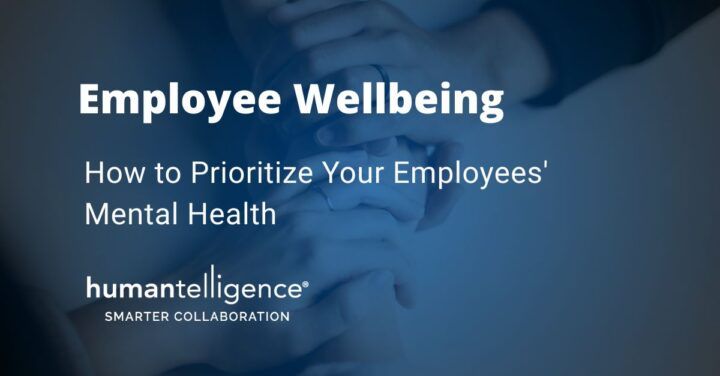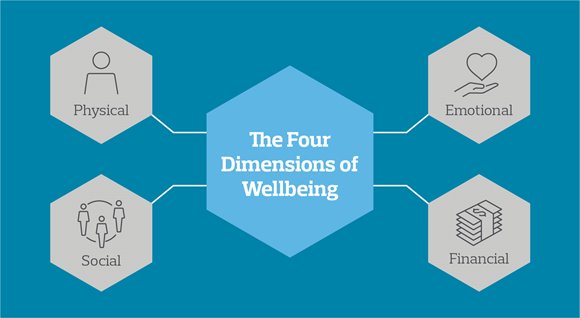How to Prioritize Employee Mental Health
- May 9, 2023
- Humantelligence

The workplace can be a stressful environment. Employees are under constant pressure to perform at their best and meet deadlines. Add to this the near constant state of uncertainty — more than 165,000 people have been laid off in 2023 along, according to TechCrunch — workers feel more anxious, depressed, and burnt out than ever before. Employee mental health impacts everyone.
Mental health problems can have a negative impact on employees’ job performance, as well as their physical health. They may also lead to absenteeism and high turnover rates. Mental health problems are a major issue in the workplace, but they are often overlooked. Employers need to prioritize employee mental health and well-being in order to create a healthy and productive workplace.
The Importance of Prioritizing Employee Mental Health & Wellbeing
Mental health issues in the workplace can be draining, both financially and emotionally. Employees can become disengaged from their work and suffer from burnout, which can lead to decreased productivity. This can have a negative impact on the bottom line of a business.
- $20mn of additional lost opportunity for every 10,000 workers due to struggling or suffering employees
- 75% of medical costs accrued mostly due to preventable conditions
- $322 billion of turnover and lost productivity cost globally due to employee burnout
- 15% to 20% of total payroll in voluntary turnover costs, on average, due to burnout
In order to combat these issues, employers must prioritize employee mental health and well-being. This means implementing policies that protect and promote mental health. Some of these include having regular team meetings to discuss employee mental health, offering mental health resources to employees, and providing mental health education to managers and employees.
In addition, employers should strive to create an environment of openness and trust. This means that there should be a safe space for employees to discuss their mental health with managers and colleagues. Managers should also strive to create a work environment that promotes engagement and healthy work-life balance.
By recognizing the importance of mental health and well-being in the workplace, employers can create a happier, healthier, and more productive environment for their employees. This will ultimately lead to increased productivity and a healthier bottom line.
How to Create a Mentally Healthy Workplace
And though we all probably knew this before, the pandemic has really driven home the point. Feeling happy and content at work is crucial to feeling happiness in life. It would benefit all of us to continue to find ways to help coworkers, employees, and leaders feel good. To start closing the disconnect between what employers say and what employees experience, here are seven ways to support the mental health of your employees right now.
Survey your own employees about mental health in the workplace.
First things first…you don’t know what you don’t know. Many companies implement stress management programs — and that’s a good start. But reach out to employees about what stresses they are managing while at work. When you start to see patterns, you’ll be able to better gauge the energy and dynamic of your team and identify interventions that can have a collective positive impact.
Help employees reduce — not just manage — stress.
Once you’ve evaluated the main stressors of your population, make it a priority to address mental health at work. Consider implementing flexible hours or permanently hybrid or virtual work arrangements to help people juggle work and life. If resources are an issue, staff up, contract out, add budget, reprioritize, and put some projects on hold — because nothing is more important than the health and well-being of your employees.
Take care of your employees by watching their hours.
While burning the midnight oil seems noble and can get results in the short term, the long-term result is burnout. People need to rest, recharge and connect with loved ones to stay mentally sound, so make sure long hours aren’t a regular occurrence.
Make time for fun and empower meaningful connection.
Whether it’s playing a game or just connecting over chat, having fun with coworkers increases productivity and builds trust. It also relieves stress by forcing a cognitive shift in how stressors are viewed and creates a positive emotional response.
When it comes to work, we can also do better to enable more meaningful connection. Whether working one-on-one or within and across departments or divisions, teams can have a deeper understanding of one another, and as a result, work together more effectively than ever before.
To do this easily and quickly, some organizations are leveraging add-ons to the communication tools they’re already using every day — think, email, chat, video meetings. These add-ons surface surface actionable communication, collaboration and inclusion tips so people can connect more meaningfully. It also surfaces key insights around influencing, motivating, and collaborating.
Keep an eye out for depression.
According to the Partnership for Workplace Mental Health, 70 percent of people with depression are in the workforce — and not all of them are aware of their condition. Nevertheless, only 15 percent of employers train managers on how to recognize depression and intervene to help with employee care. Considering that treating depression can save companies $2,000 annually per employee through improved health and productivity, learning to take care of your employees is well worth it — not just from a cost perspective, but to help employees stay healthy and happy.
Provide support and employee care.
Make sure your company provides adequate benefit coverage for mental health services — from individual and couples counseling to group therapy. Offer an Employee Assistance Program (EAP) that provides access to qualified mental health therapists and a variety of services to help employees manage their lives. If you cannot implement an EAP, consider compiling a resource center of apps and services for your employees to use.
Bring it all together.
Consider implementing a written mental health philosophy and policy for all employees. Some organizations are creating a documented mental health policy for team members, as a way to open up the conversation and show them the support they deserve to receive from their employers. Major elements of any communication policy around mental health should include:
Acknowledgment. Let the team know that it is okay to disclose (or not disclose) a mental illness at work and to ask for help.
Offerings. Provide a clear and comprehensive explanation of benefits to ensure that employees know what resources are available to them.
Accommodations. The policy should also detail how employees can ask for reasonable accommodations for a mental health condition and explains that their information will be kept confidential.
The Benefits of a Mentally Healthy Workplace
A mentally healthy workplace has many benefits for both employers and employees. It is an important factor in promoting employee wellbeing and driving productivity. Employers who prioritize employee mental health will see an improvement in staff engagement, retention and job performance.
The positive effects of a mentally healthy workplace go beyond the individual employee. By providing support and resources to maintain employees’ mental health, businesses can create a more collaborative and stress-free work environment. This will boost morale, productivity and creativity throughout the entire organization.
Mental health initiatives can also help businesses save costs by lowering the risk of burnout among staff, avoiding workplace accidents and reducing the potential for absenteeism. Employers who prioritize employee mental health and wellbeing can also benefit from an enhanced reputation and better staff recruitment and retention rates.
Ultimately, good mental health is integral to helping businesses succeed. By creating a mentally healthy workplace, employers can ensure that their employees have the resources and support they need to reach their full potential. If you’re interested in building a healthy team toolkit for your organization, we encourage to talk to one of our solutions experts.
